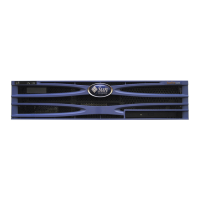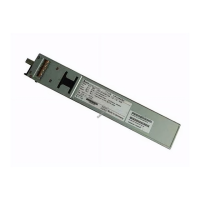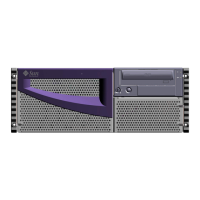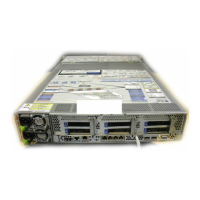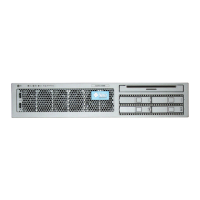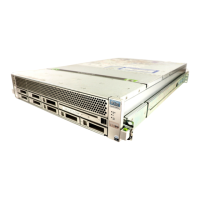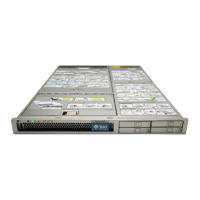Chapter 2 Removing and Replacing Components 2-11
2.5.4 Removing a SCSI Hard Drive With Solaris
Running
If you are removing a hard drive while the operating system is still running, you
must remove the drive logically from the operating system before removing it
physically. Follow the instructions in this section, then remove the hard drive
physically by following the instructions in
Section 2.5.1, “Removing a Hard Drive”
on page 2-7.
Use the following instructions in conjunction with the cfgadm(M) man page.
1. Check that the hard drive you want to remove is visible to the Operating System.
Type:
2. Get the correct Ap_Id label for the hard drive that you want to remove. Type:
Note – Before proceeding, you must remove the hard drive from all of its software
mount positions and delete any swap areas in use on the drive. If the drive is the
system’s boot device, do not proceed further with these instructions. Do not attempt
to unconfigure the boot disk.
# format
Searching for disks...done
AVAILABLE DISK SELECTIONS:
0. c0t0d0 <SUN36G cyl 24427 alt 2 hd 27 sec 107>
/pci@1f,0/pci@1/scsi@8/sd@0,0
1. c0t1d0 <SUN36G cyl 24427 alt 2 hd 27 sec 107>
/pci@1f,0/pci@1/scsi@8/sd@1,0
# cfgadm -al
Ap_Id Type Receptacle Occupant Condition
c0 scsi-bus connected configured unknown
c0::dsk/c0t0d0 CD-ROM connected configured unknown
c1 scsi-bus connected configured unknown
c1::dsk/c1t0d0 disk connected configured unknown
c1::dsk/c1t1d0 disk connected configured unknown
c2 scsi-bus connected unconfigured unknown
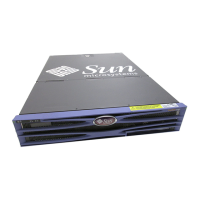
